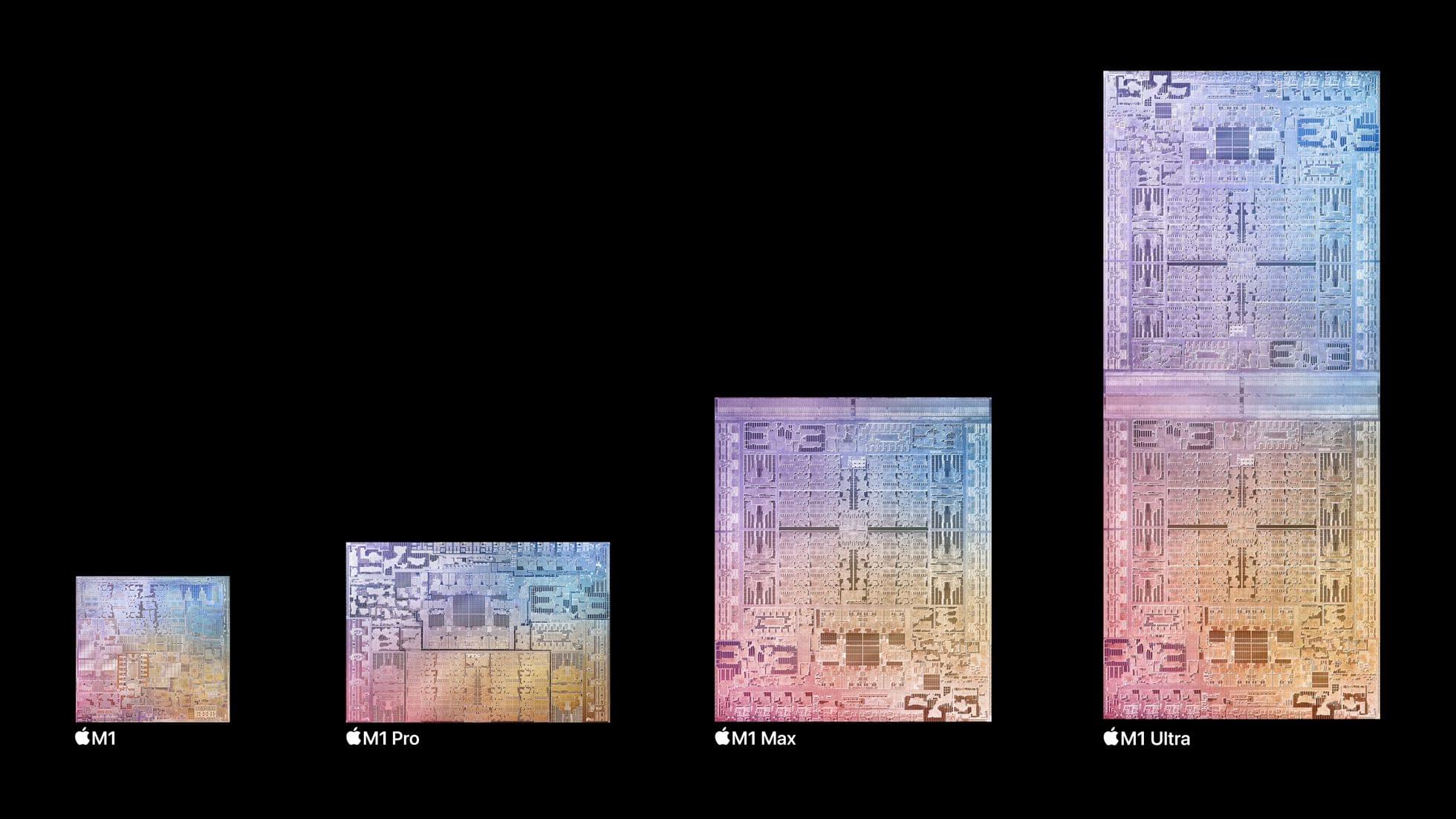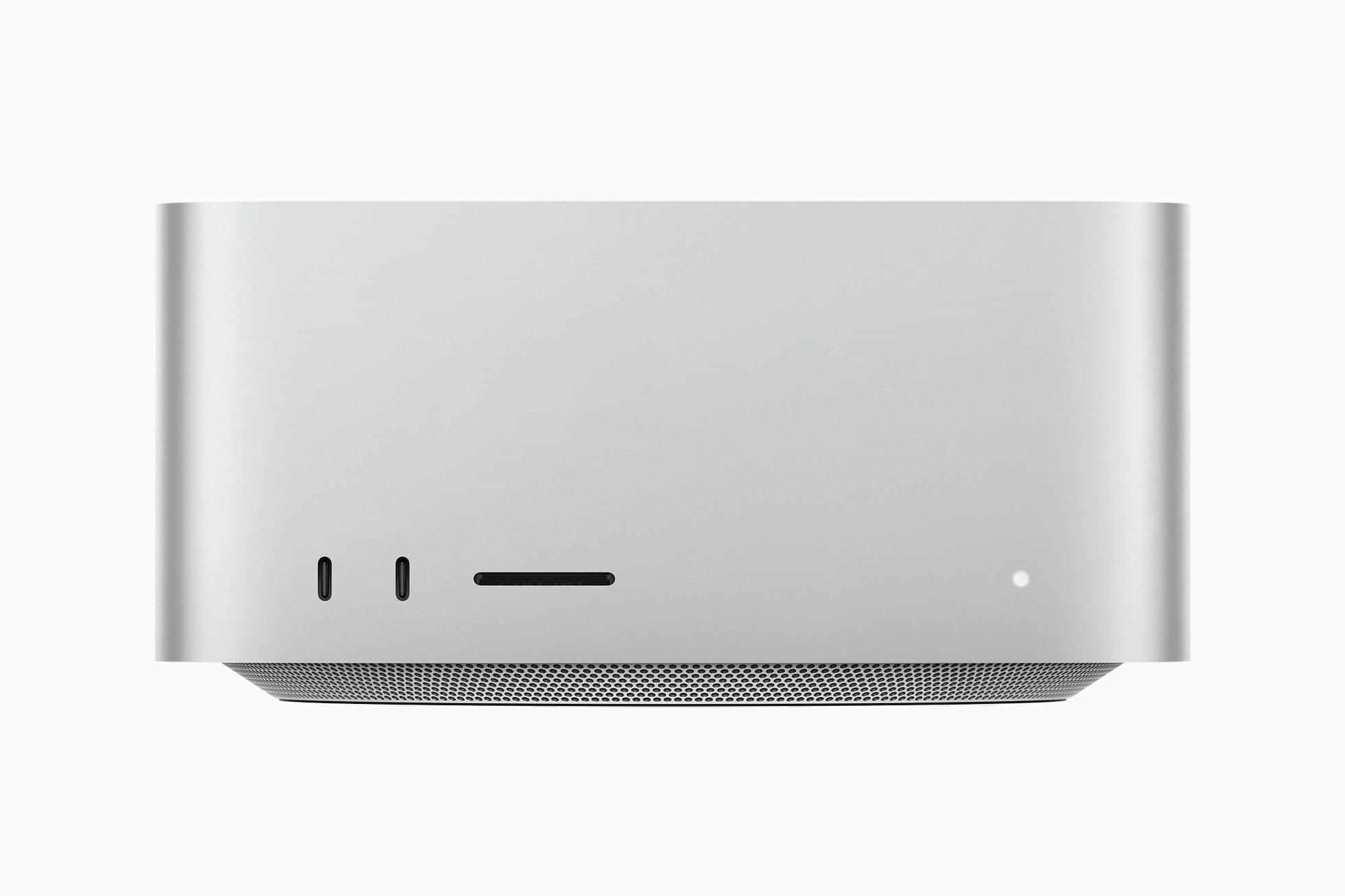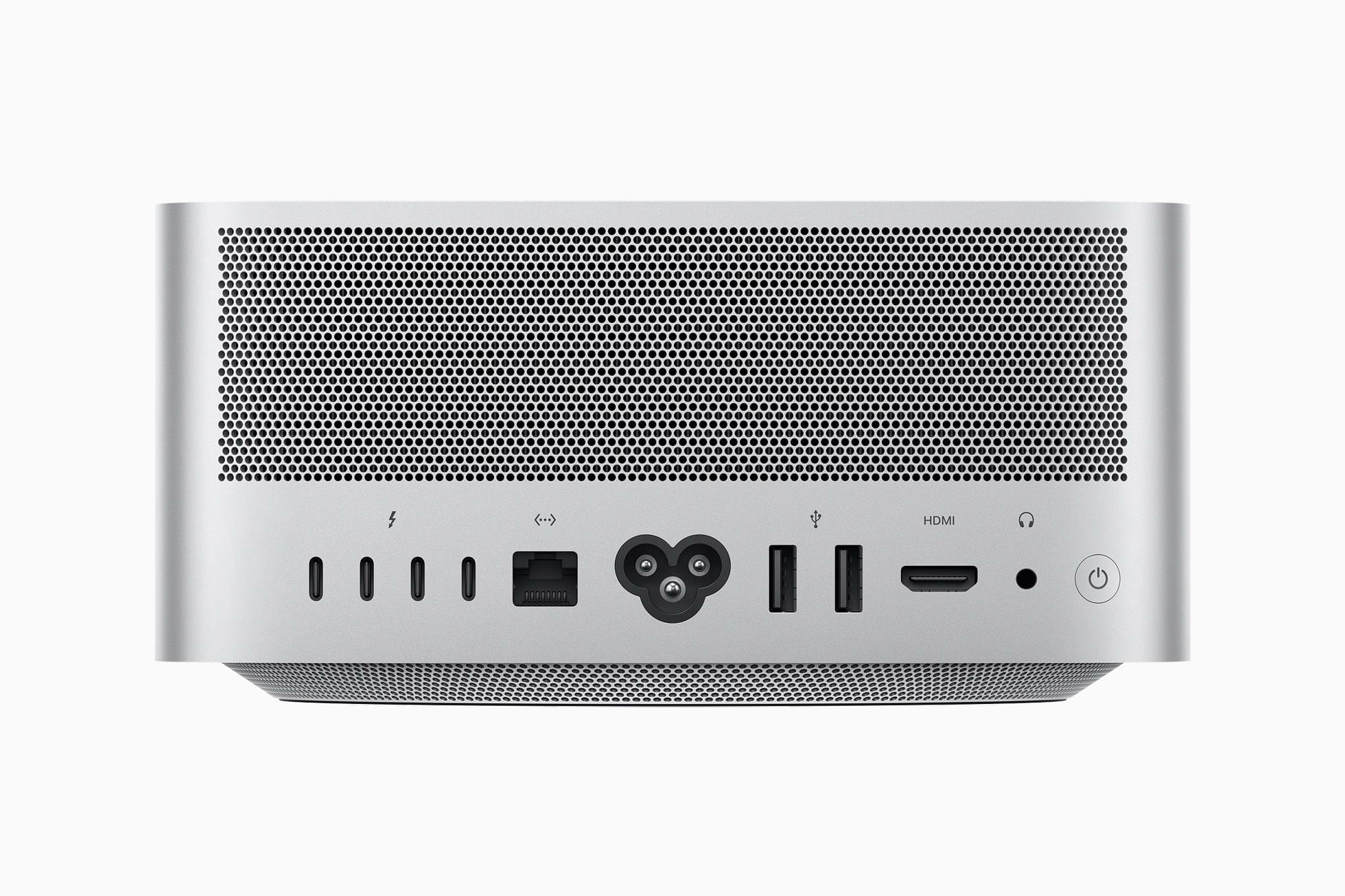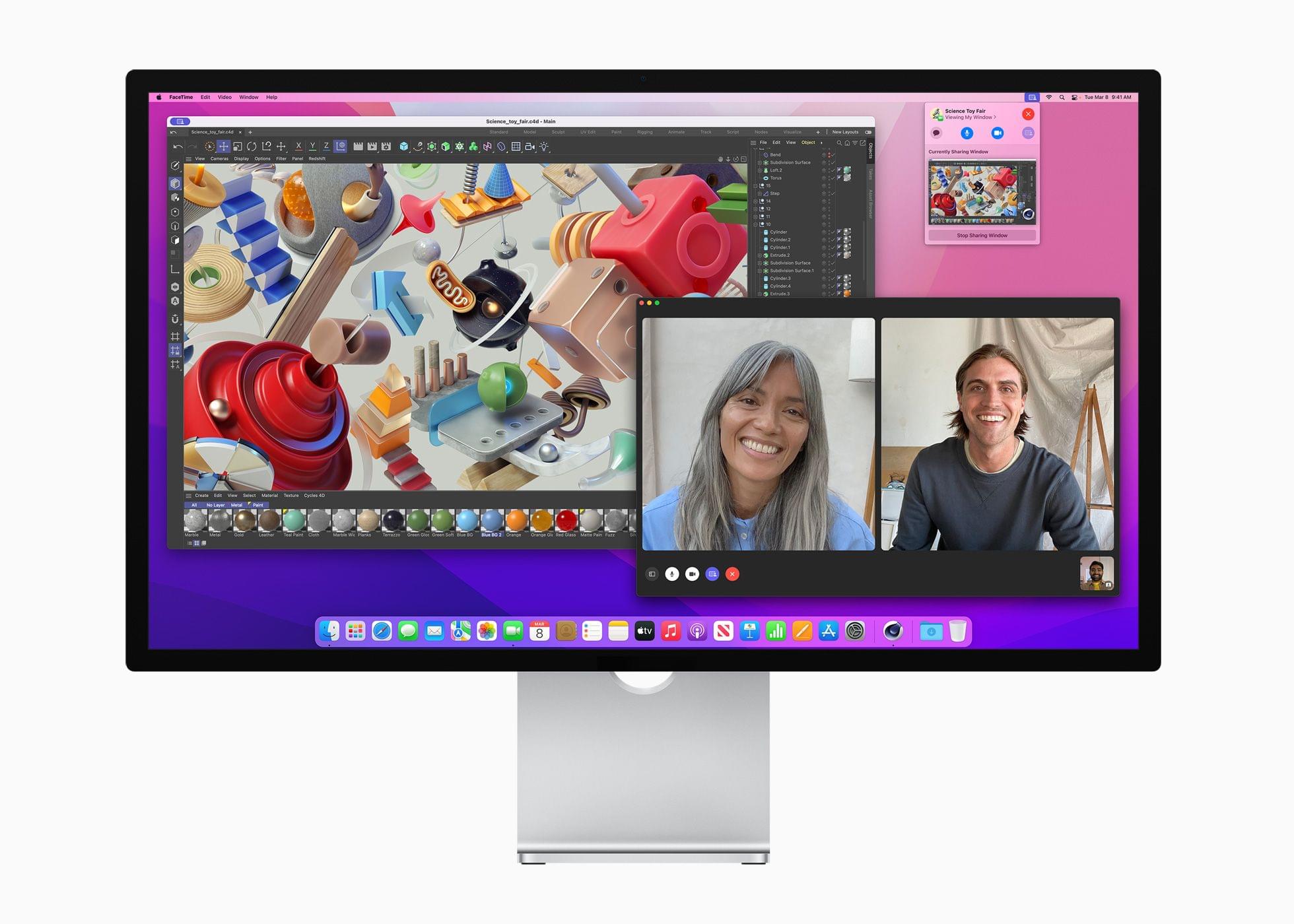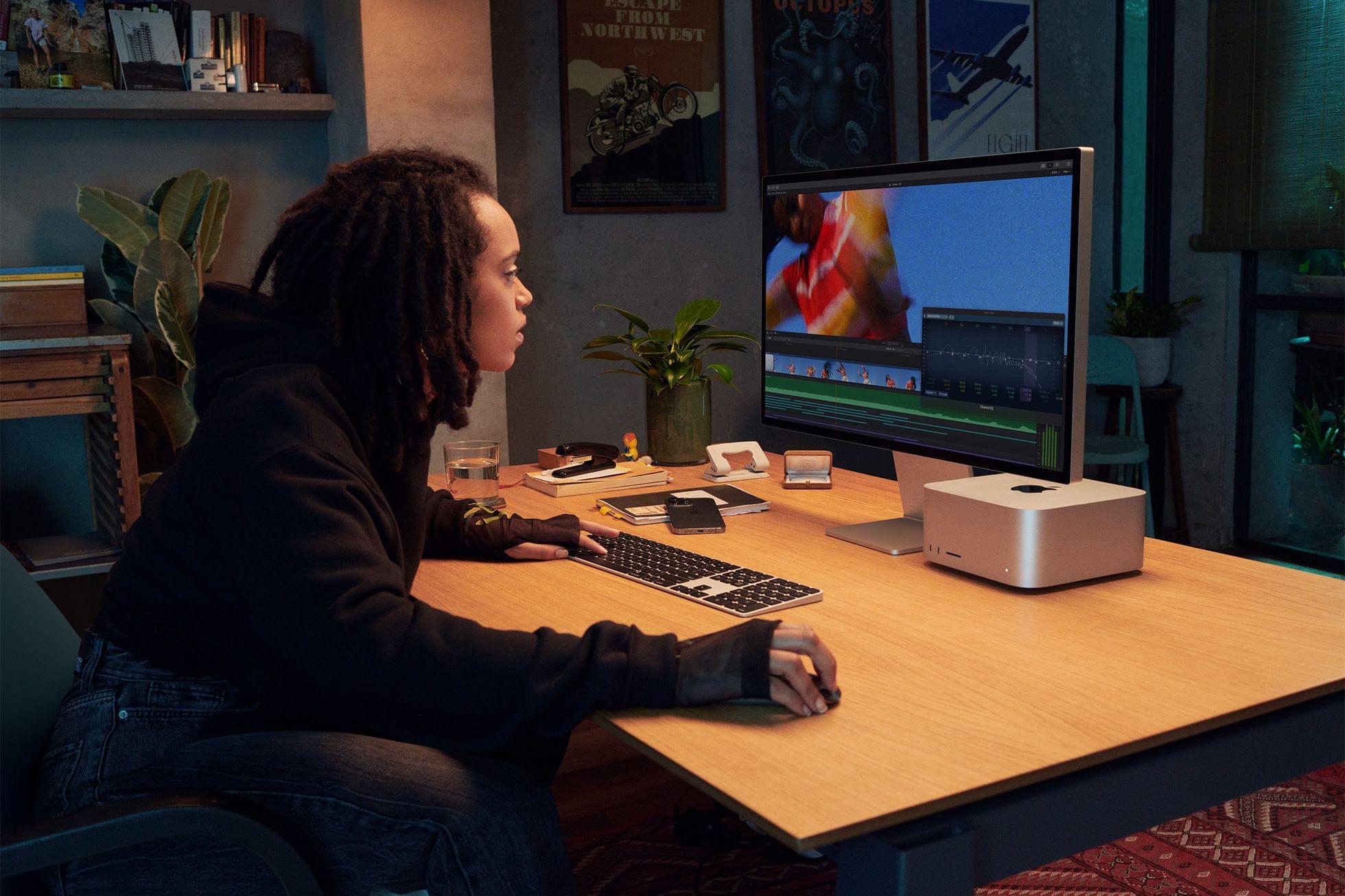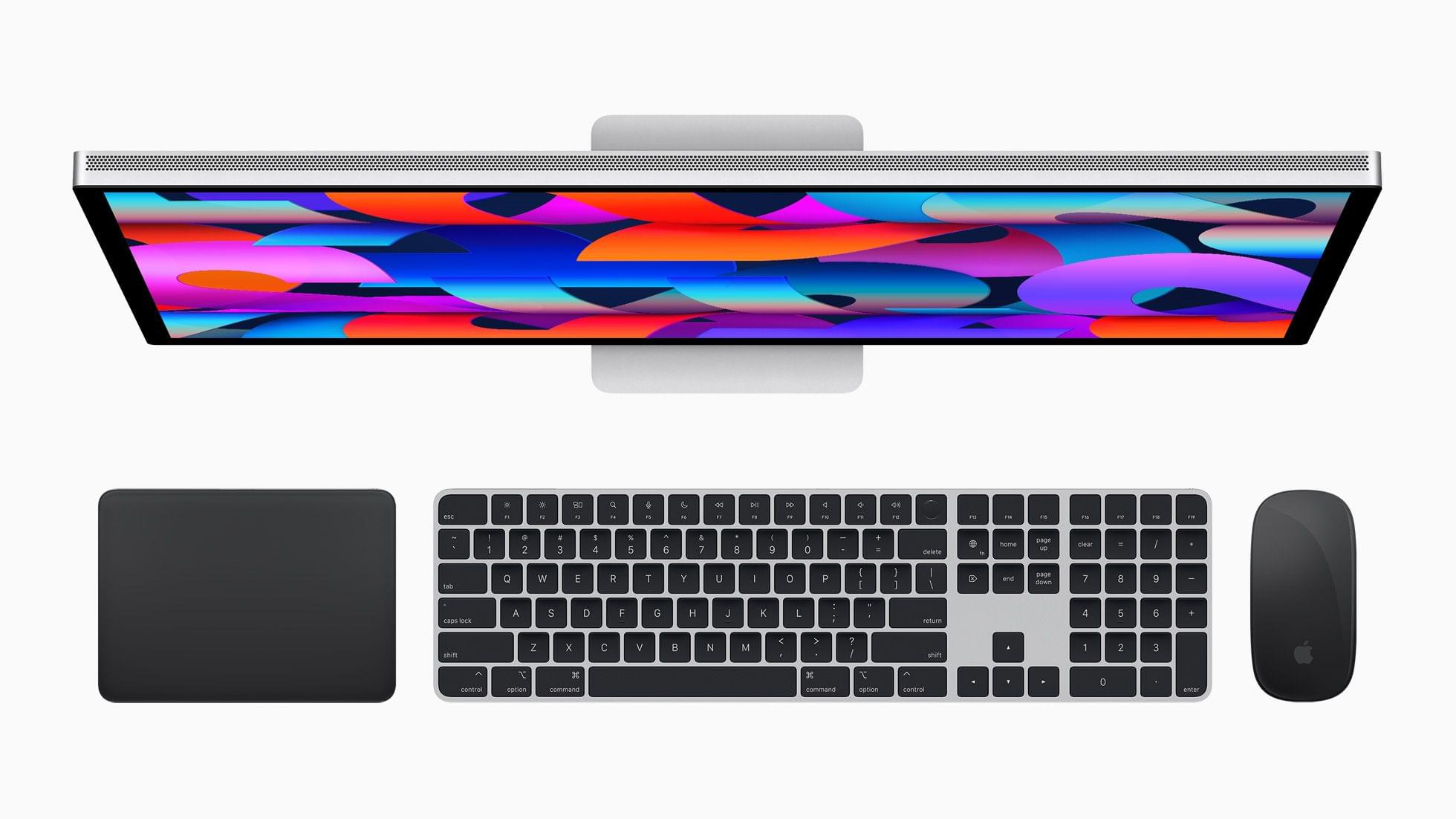Yesterday during their Peek Performance keynote event, Apple unveiled the Mac Studio and Apple Studio Display. The former is an all-new computer joining the Mac lineup, with specs that are blowing away Apple’s previous offerings due to the introduction of a new top-of-the-line M-series chip: the M1 Ultra. The Apple Studio Display marks Apple’s true return to the consumer display market after a near decade-long hiatus.
M1 Ultra
As we entered the Mac-focused section of the keynote, Apple SVP of Hardware Technologies Johny Srouji took the screen to tell us that the M1 Max chip has been hiding a secret the whole time. Each M1 Max can actually be connected to another M1 Max using Apple’s custom-built ‘UltraFusion’ packaging architecture. This connection instantly doubles nearly all of the chip’s capabilities, but doesn’t come with the usual trade-offs of connecting two chips using a motherboard as the middleman. Instead, the UltraFusion architecture allows the combined M1 Max chips to operate as a single entity, and Apple has dubbed this joined-together chip the M1 Ultra.
The M1 Ultra includes a 20-core CPU (16 high-performance cores and 4 high-efficiency cores) and 32-core Neural Engine for all models. The base model includes a 48-core GPU, but can be specced up to 64 cores. Apple’s reported graphics measurements for the chip are pretty astounding, including the claim that it matches the performance of the highest-end PC GPU available while using 200W less power. Apple’s CPU claims for the chip are similarly explosive and early benchmarks seem to back these up. The only area where the chip doesn’t seem to have significantly improved over other Apple silicon models is in single-threaded performance, but that’s to be expected since it’s still based on Apple’s standard M1 chip architecture, and increasing core counts does little for single-threaded operations.
Mac Studio
A chip is only as impressive as the machines it powers, and Apple didn’t leave us hanging on that front. The Mac Studio is Apple’s latest addition to the Mac lineup, and it has some extremely impressive specs of its own.
Design-wise, the Mac Studio looks essentially like a tall Mac mini. Its case is made from Apple’s familiar silver aluminum, and features an Apple logo on the top, fan holes and the words ‘Mac Studio’ on the bottom, exhaust holes on the back, and I/O ports on the front and back. A single indicator light on the front shows the machine’s current status.
On the interior, the entire top half of the machine is essentially just a fan. This makes up the cooling system which draws air in from the fan holes in the bottom and exhausts it out through the holes in the back. The system should keep the Mac Studio running cool whether you choose its baseline model with an M1 Max chip, or spend an extra $1,400 to upgrade to the M1 Ultra.
The Mac Studio’s M1 Max base configuration also includes 32GB of unified memory and 512GB of SSD storage. You can upgrade the M1 Max version with up to 64GB of unified memory and up to 8TB of storage. The M1 Ultra configuration starts at 64GB of unified memory, but it can be upgrade all the way to 128GB. Finally, both the M1 Max and M1 Ultra configurations include the option to add more cores: $200 will net you an extra 8 cores on an M1 Max, while $1,000 will buy an extra 16 cores on the M1 Ultra.
For I/O, the Mac Studio includes four Thunderbolt 4 ports, a 10Gbit Ethernet port, a proprietary port for the new power cable, two USB-A ports, an HDMI port, and a 3.5mm headphone jack on the back. If you choose the M1 Max model then you’ll find two USB-C ports on the front as well, but if you upgrade to the M1 Ultra then these two ports will be Thunderbolt 4 instead. Both models also include a front-facing SDXC card slot.
Apple has detailed some wild performance metrics for the new Mac Studio. Among others, Apple claims that the M1 Max version of the device packs up to 50% faster CPU performance than the 16-core Mac Pro, and over 3x faster graphics performance than the most popular graphics card for Mac Pros. The M1 Ultra version boasts 90% faster CPU performance than the 16-core Mac Pro and up to 80% faster graphics performance than the fastest Mac graphics card currently available.
A headless computer wouldn’t be complete without a display though, and for the first time in years Apple has finally come through (at least in a reasonably affordable way) on this front.
Apple Studio Display
The Apple Studio Display is a 27-inch 5K Retina display with a built-in camera, microphone array, and speaker system. The display itself features 14.7 million pixels, 600 nits of brightness, P3 wide color, and support for more than a billion colors. If any of those numbers sound familiar, that’s because it’s the same excellent display that has long been proven out in Apple’s 5K iMac.
The new Studio Display packages an internal Apple A13 Bionic chip to power its advanced features such as Center Stage and Spatial Audio. The built-in 12MP Ultra Wide camera is the best camera Apple has ever put in Mac-focused hardware, and this will be the first time that Center Stage can be used on a Mac. The A13 also leverages the Studio Display’s six-speaker sound system to enable Spatial Audio. This is the best sound system ever included on Mac-focused hardware, and is joined by a three-microphone array for improved audio quality during calls or voice recording.
For connectivity, the Apple Studio Display includes three USB-C ports and a Thunderbolt 3 port. The Thunderbolt port routes any peripherals connected to the USB-C ports back to the host machine via a single cable. At the same time as it passes the USB-C connections, the Thunderbolt port can also run 96W of power to the host machine — enough to fast-charge a 14-inch MacBook Pro.
There are three stand options for the Apple Studio Display: a tilt-adjustable stand, a premium height-and-tilt-adjustable stand, or a VESA mount adapter. The first and last of these options are built into the base price of the display, but the height-adjustable stand will cost a significant $400 extra. This stand is extremely over-engineered for a “weightless” effect as you raise and lower it, but ultimately the only practical feature it brings is the ability to move the display up and down. Neither the tilt-adjustable nor the height-adjustable stand includes the ability to rotate the monitor 90 degrees, but rotation is of course supported when the display is connected to a VESA arm.
Pricing and Availability
The Mac Studio and Apple Studio Display are already available to order on Apple’s store, and will begin arriving to customers on March 18. The Mac Studio starts at $1,999, and the Studio Display starts at $1,599. Alongside these products, Apple has also released new Magic Keyboard, Magic Trackpad, and Magic Mouse peripherals with black finishes, which are all available for order today.
You can follow all of our ‘Peek Performance’ Apple event coverage through our event hub, or subscribe to the dedicated RSS feed.



